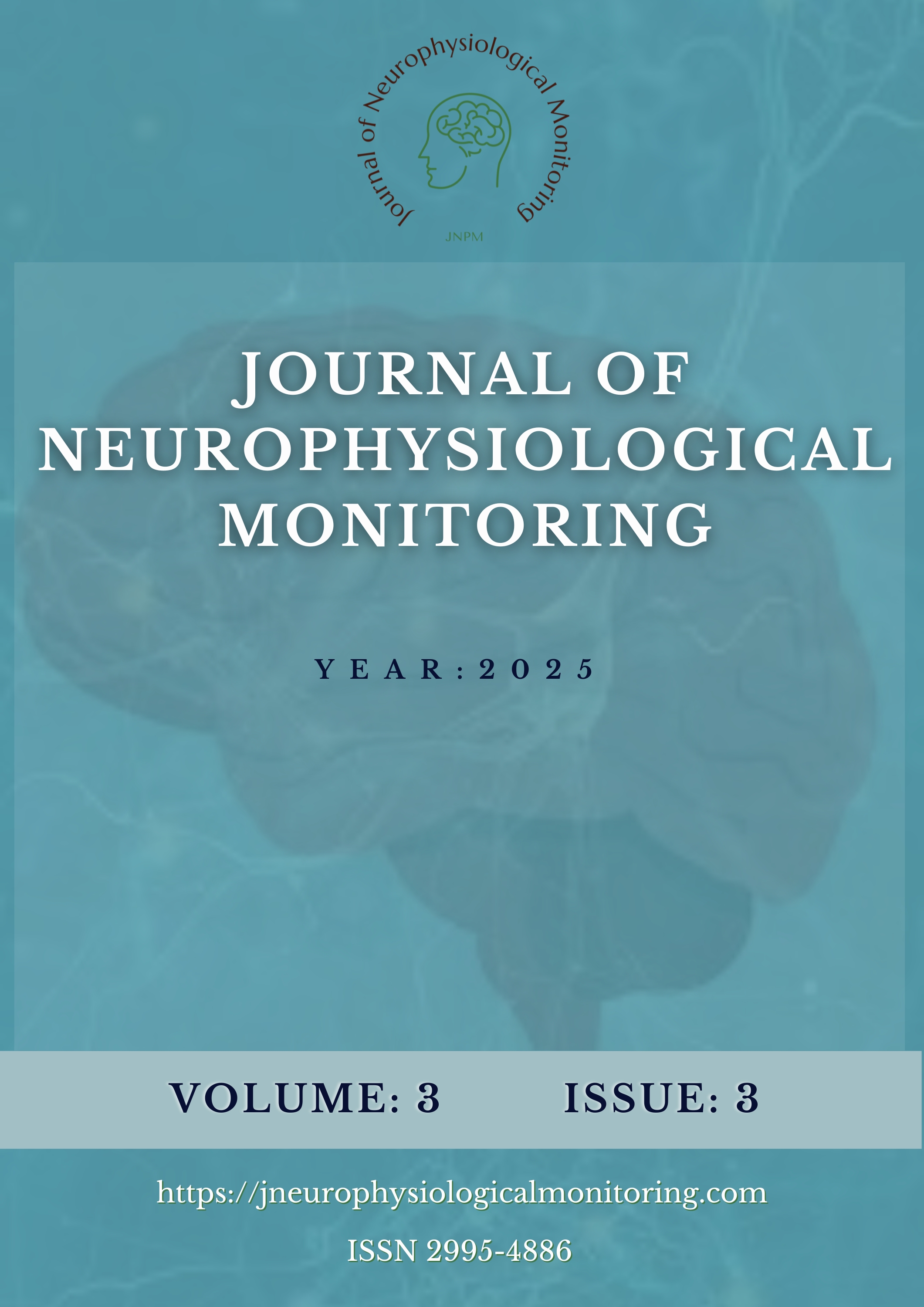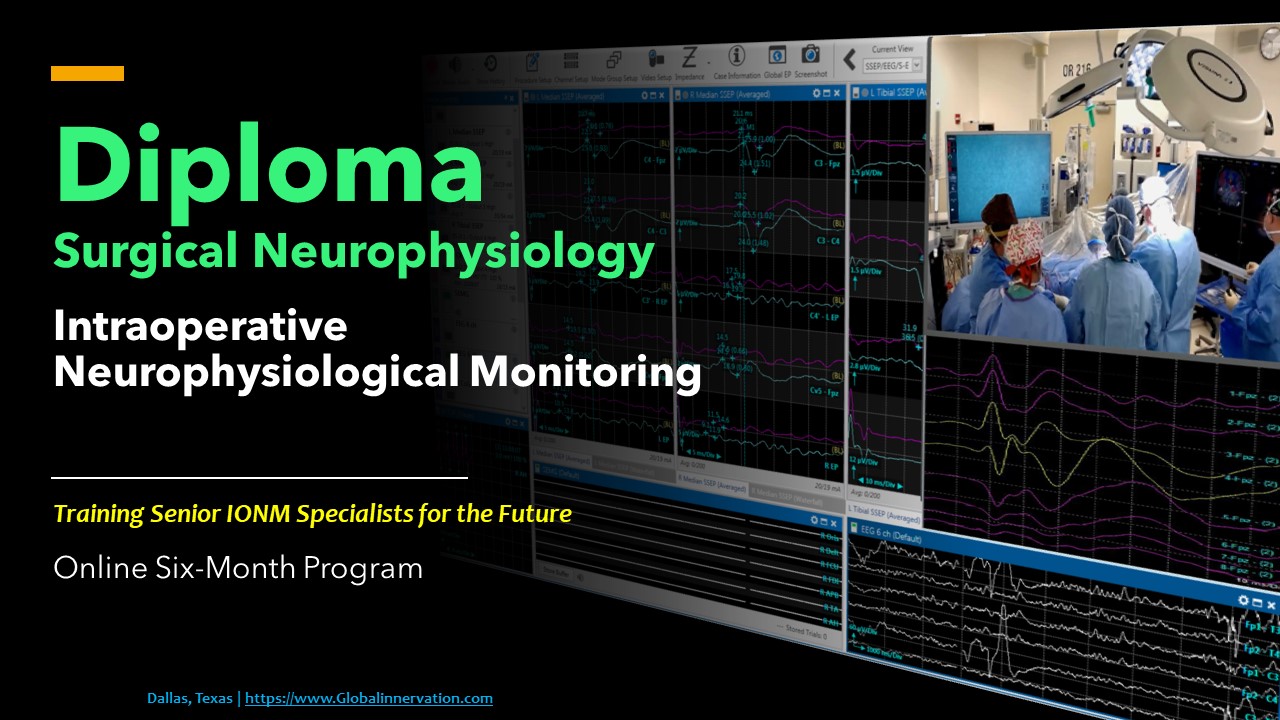Approach to challenges in a case of cervical spine neuromonitoring - One case many learnings: Case report and review of literature
DOI:
https://doi.org/10.5281/zenodo.16749029Keywords:
cervical, intraoperative neurophysiological monitoring, spine surgery, etomidate, troubleshooting, prone positioningAbstract
Introduction: Intraoperative monitoring (IONM) during spine surgery can be fraught with challenges at various stages. Mal-occluded teeth can impede transcranial motor evoked potential (TcMEP) monitoring. Prone positioning may further compromise existing myelopathy. Tibial somatosensory evoked potentials (SSEP) may be absent at baseline due to the myelopathy. Certain total intravenous anesthesia (TIVA) can enhance the SSEPs. Here, a case is reported with such challenges that required customizing the IONM along with systematic interpretation of IONM signals, leading to a good outcome.
Case presentation: A 73-year-old male with severe cervical myelopathy underwent C3-7 decompression with fixation under IONM. He had a deep bite, which was covered with 3 soft bite blocks made of gauze placed between the molars and incisors. Preposition baseline bilateral Median SSEPs were well elicited, but bilateral baseline Tibial SSEPs were absent. Hence, Ulnar SSEPs were recorded to increase the yield of SSEP monitoring. Postposition TcMEPs were absent from the foot muscles and attenuated significantly in the other muscles. Reducing the neck extension restored the signals. The patient was given bolus etomidate prior to closure. A significant augmentation of SSEP amplitudes was noted. Etomidate can augment the amplitude of cortical SSEP recordings. The surgery was completed uneventfully, and the patient did not have any postoperative neurologic deficits.
Conclusion: This case highlights the importance of tailoring IONM methodology, like creating the soft bite block, so that TcMEP could be monitored, employing Ulnar SSEPs when Tibial SSEPs were unrecordable because it was below the level of the lesion, prompt recognition and correction of position-related signal alerts, and awareness of specific effects of anesthetic agents to avoid misinterpretation
References
Skinner SA, Cohen BA, Morledge DE, McAuliffe JJ, Hastings JD, Yingling CD, McCaffrey M. Practice guidelines for the supervising professional: intraoperative neurophysiological monitoring. J Clin Monit Comput. 2014 Apr;28(2):103-11. https://doi.org/10.1007/s10877-013-9496-8
Nuwer, M.R.; Emerson, R.G.; Galloway, G.; Legatt, A.D.; Lopez, J.; Minahan, R.; Yamada, T.; Goodin, D.S.; Armon, C.; Chaudhry, V.; et al. American Association of Neuromuscular and Electrodiagnostic Medicine. Evidence-Based Guideline Update: Intraoperative Spinal Monitoring with Somatosensory and Transcranial Electrical Motor Evoked Potentials. J. Clin. Neurophysiol. Off. Publ. Am. Electroencephalogr. Soc. 2012, 29, 101–108. https://doi.org/10.1212/WNL.0b013e318247fa0e
Appel, S., Korn, A., Biron, T., Goldstein, K., Rand, N., Millgram, M., et al., 2017. Efficacy of head repositioning in restoration of electrophysiological signals during cervical spine procedures. J. Clin. Neurophysiol. 34, 174–178. https://doi.org/10.1097/WNP.0000000000000340
Graham, R.B., Cotton, M., Koht, A., Koski, T.R., 2018. Loss of intraoperative neurological monitoring signals during flexed prone positioning on a hinged open frame during surgery for kyphoscoliosis correction: case report. J. Neurosurg. Spine 29, 339 – 343. https://doi.org/10.3171/2018.1.SPINE17811
MacDonald DB. Safety of intraoperative transcranial electrical stimulation motor evoked potential monitoring. J Clin Neurophysiol. 2002 Oct;19(5):416-29. https://doi.org/10.1097/00004691-200210000-00005
Wi SM, Lee HJ, Kang T, Chang SY, Kim SM, Chang BS, Lee CK, Kim H. Clinical Significance of Improved Intraoperative Neurophysiological Monitoring Signal during Spine Surgery: A Retrospective Study of a Single-Institution Prospective Cohort. Asian Spine J. 2020 Feb;14(1):79-87. https://doi.org/10.31616/asj.2019.0025
Meng XL, Wang LW, Zhao W, Guo XY. Effects of different etomidate doses on intraoperative somatosensory-evoked potential monitoring. Ir J Med Sci. 2015 Dec;184(4):799-803. https://doi.org/10.1007/s11845-014-1174-4
Burke D, Nuwer MR, Daube J, et al. Intraoperative monitoring. The International Federation of Clinical Neurophysiology. Electroencephalogr Clin Neurophysiol Suppl 1999;52:133–148.
Toleikis JR. American Society of Neurophysiological Monitoring. Intraoperative monitoring using somatosensory EP. A position statement by the American Society of Neurophysiological Monitoring. J Clin Monit Comput 2005;19:241–258. https://doi.org/10.1007/s10877-005-4397-0
Cavinato M, Vittoria F, Piccione F, Masiero S, Carbone M. The value of intraoperative neurophysiological monitoring during positioning in pediatric scoliosis correction: A case report. Clin Neurophysiol Pract. 2022 Nov 14;7:366-371. https://doi.org/10.1016/j.cnp.2022.11.001
Sutter M, Eggspuehler A, Muller A, Dvorak J. Multimodal intraoperative monitoring: an overview and proposal of methodology based on 1,017 cases. Eur Spine J. 2007;16 Suppl 2:S153–61. https://doi.org/10.1007/s00586-007-0417-8
Raynor BL, Bright JD, Lenke LG, et al. Significant change or loss of intraoperative monitoring data: a 25-year experience in 12,375 spinal surgeries. Spine (Phila Pa 1976) 2013;38:E101–8. https://doi.org/10.1097/BRS.0b013e31827aafb9
Gonzalez AA, Jeyanandarajan D, Hansen C, Zada G, Hsieh PC. Intraoperative neurophysiological monitoring during spine surgery: a review. Neurosurg Focus. 2009;27:E6. https://doi.org/10.3171/2009.8.FOCUS09150
Bouchard JA, Bohlman HH, Biro C. Intraoperative improvements of somatosensory evoked potentials: correlation to clinical outcome in surgery for cervical spondylitic myelopathy. Spine (Phila Pa 1976) 1996;21:589–94. https://doi.org/10.1097/00007632-199603010-00011
Visser J, Verra WC, Kuijlen JM, Horsting PP, Journee HL. Recovery of TES-MEPs during surgical decompression of the spine: a case series of eight patients. J Clin Neurophysiol. 2014;31:568–74. https://doi.org/10.1097/WNP.0000000000000099
Wang S, Tian Y, Wang C, et al. Prognostic value of intraoperative MEP signal improvement during surgical treatment of cervical compressive myelopathy. Eur Spine J. 2016;25:1875–80. https://doi.org/10.1007/s00586-016-4477-5
Downloads
Published
How to Cite
Issue
Section
License
Copyright (c) 2025 J of Neurophysiological Monitoring

This work is licensed under a Creative Commons Attribution 4.0 International License.





